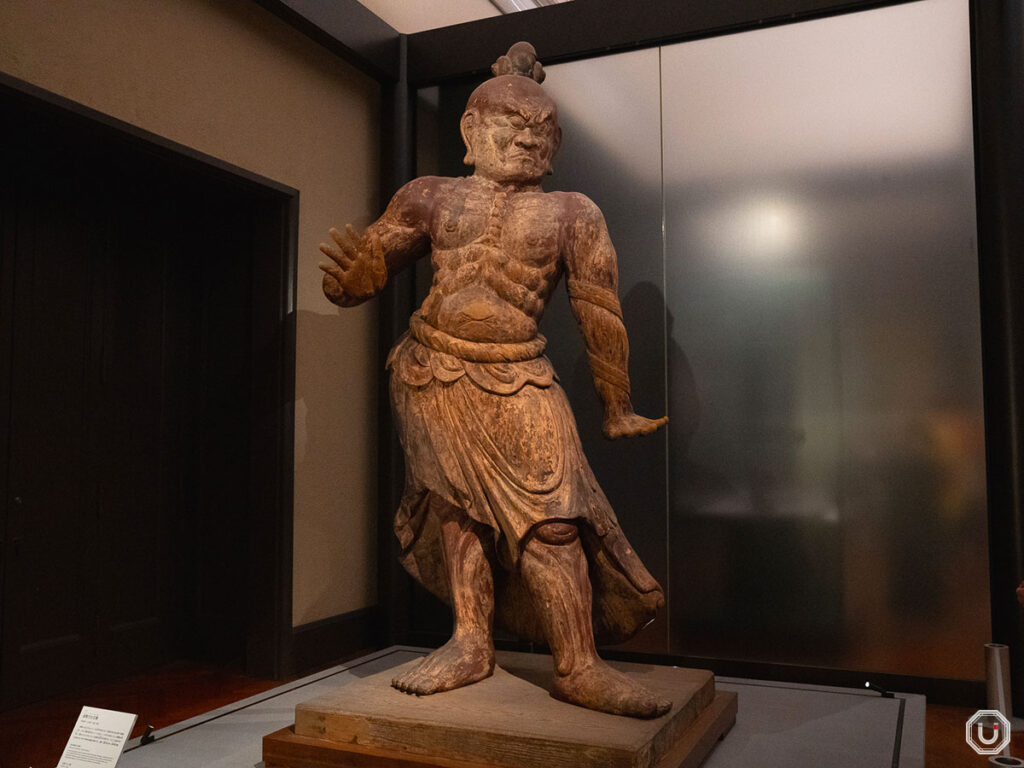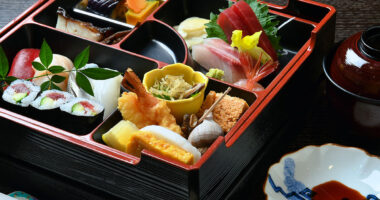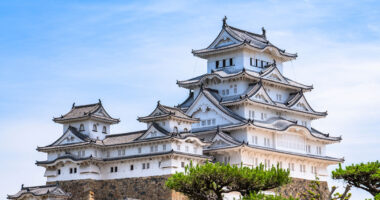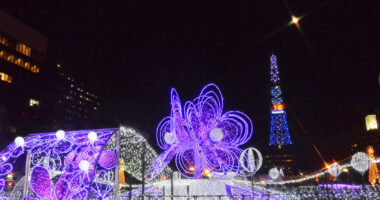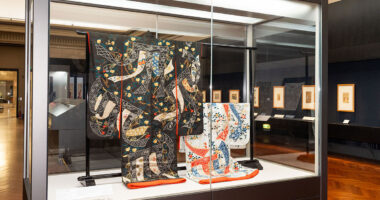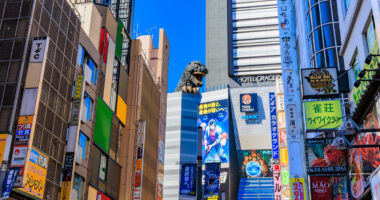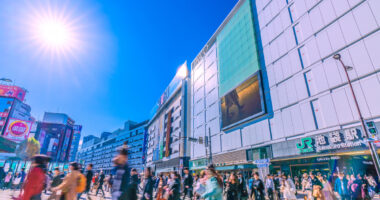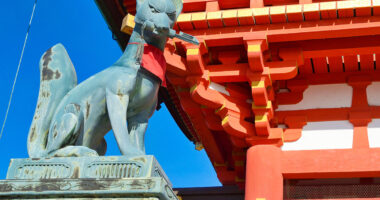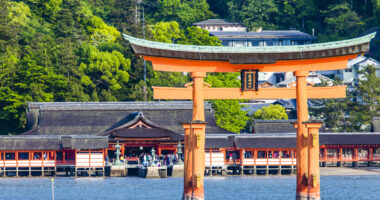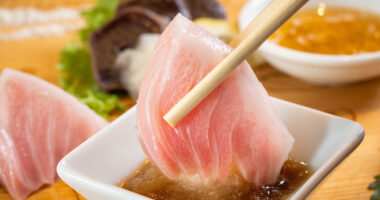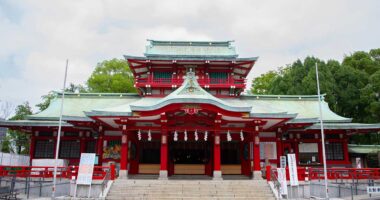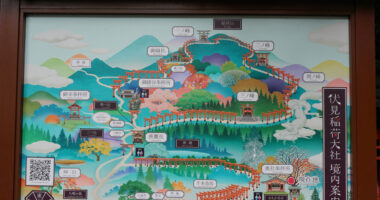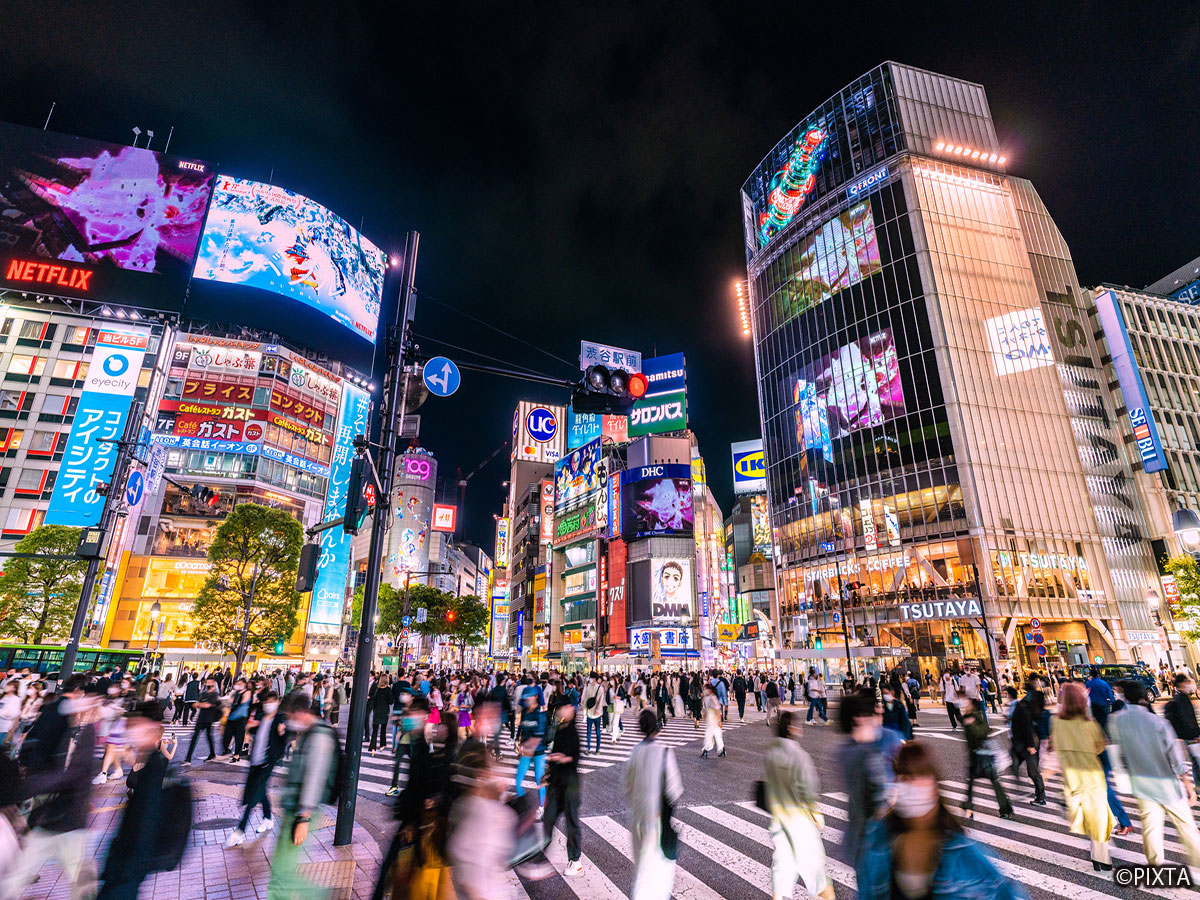The Tokyo National Museum is one of Japan’s largest museums, collecting, preserving, and exhibiting a diverse array of Japanese and East Asian art and archaeological artifacts.
With a collection exceeding 120,000 items, six exhibition halls constantly display valuable cultural properties. Among them, the Japanese Gallery in the Honkan (Japanese Gallery) is particularly noteworthy. Here, visitors can experience the flow of Japanese art from the Jōmon period (c. 10,000–300 BC) through the Edo period (1603–1868).
The legacy and prestige of Japan’s oldest museum
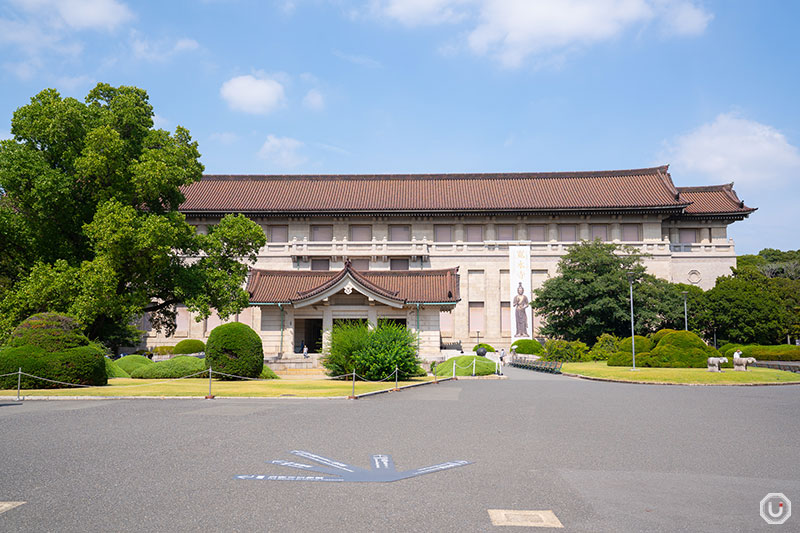
Exterior of Tokyo National Museum’s Japanese Gallery
Founded in 1872, the Tokyo National Museum is one of Japan’s most historic and extensive museums.
The stately building visible from the main entrance is the Honkan, opened in 1938 and designated an Important Cultural Property in 2001.
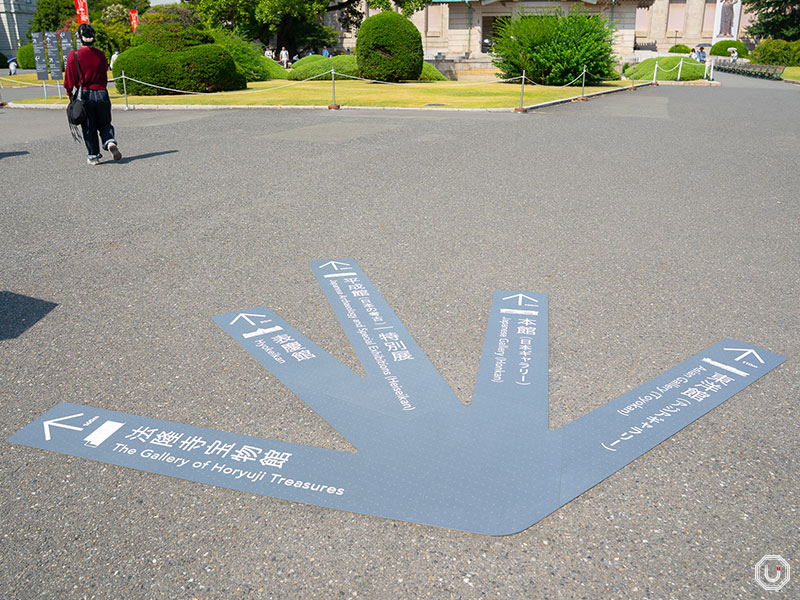
Floor guide near the entrance
The expansive grounds house multiple exhibition halls, which can overwhelm first-time visitors.
A floor guide near the entrance, embedded in the ground, offers a clear overview of the museum’s layout, ensuring easy navigation.
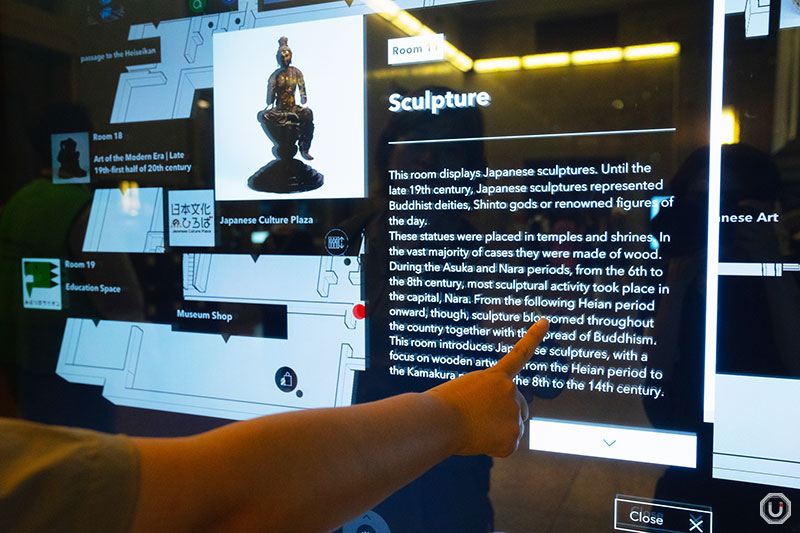
Multilingual touchscreen guide
Upon entering the Honkan, the first thing you’ll notice is the touchscreen museum guide, which can be switched to multiple languages. Just below it, paper maps are also available, offering a sense of reassurance when you have one in hand. These maps are available in eight languages: Japanese, English, Korean, Chinese (simplified and traditional), German, French, and Spanish.
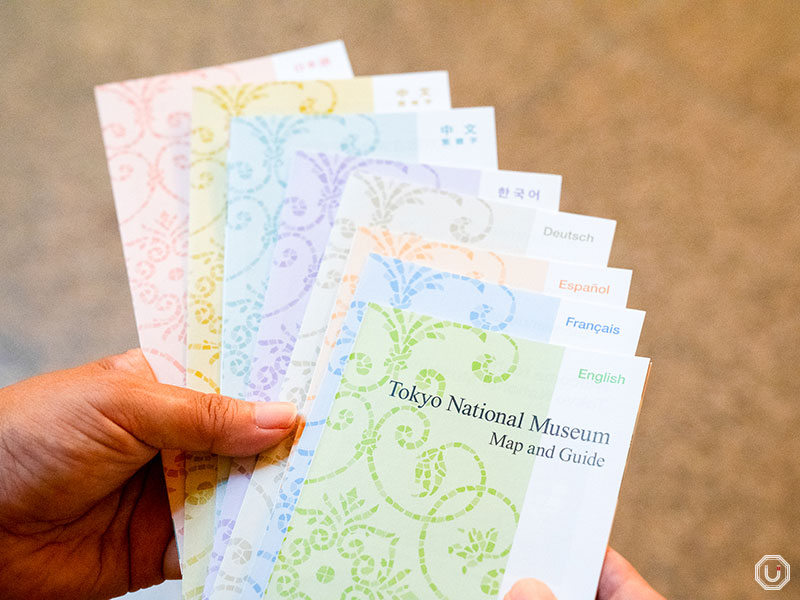
Multilingual paper museum maps
At the reception, information about the “TNM Art Guide” audio guide app is available for download on visitors’ smartphones, supporting Japanese, English, Chinese, and Korean.
These multilingual features enrich the exhibition experience.
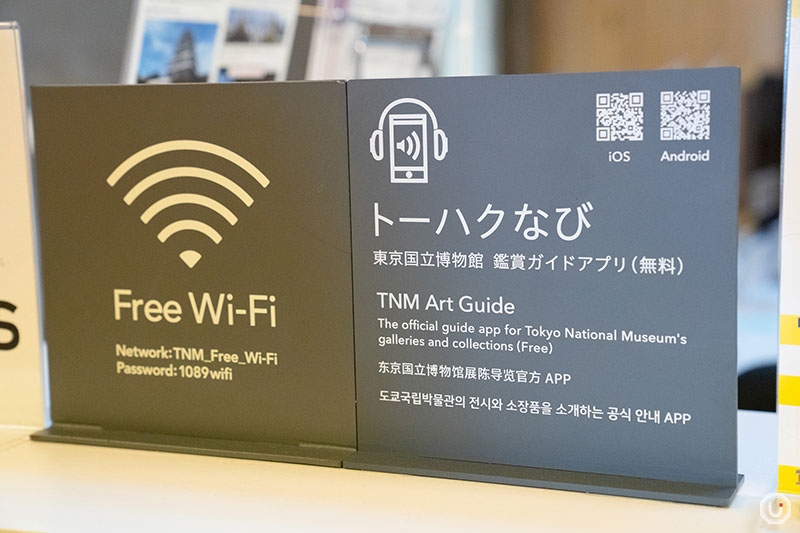
Guide for the audio app usable on visitors’ smartphones
Exploring the Japanese Gallery in Honkan
The first floor of the Honkan features exhibitions categorized by genre, such as sculpture, lacquerware, and swords.
Its circular layout allows efficient viewing by following the inner path.
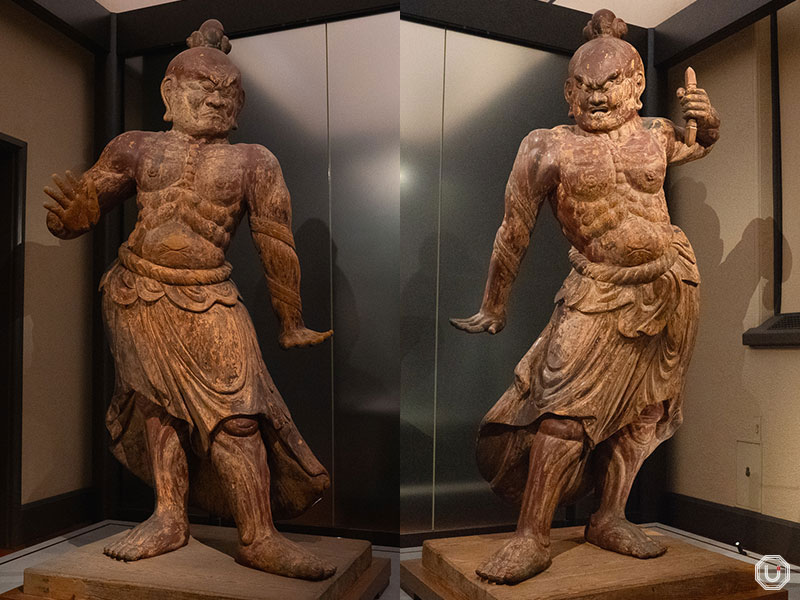
“Guardian Gods, Heian period, 12th century”
The sculpture room welcomes visitors with two imposing Nio (Guardian) Statues from the 12th century, their dynamic forms and intense presence captivating onlookers.
This room showcases masterpieces from the Nara period (710–794), when Buddhist statue production was a national endeavor, and the Heian period (794–1185), the peak of Japanese sculpture. Visitors can compare evolving styles and techniques.
The Tokyo National Museum’s vast collection and frequent exhibition rotations ensure new discoveries weekly. The statues, a rare permanent display, is a hallmark of the Honkan.
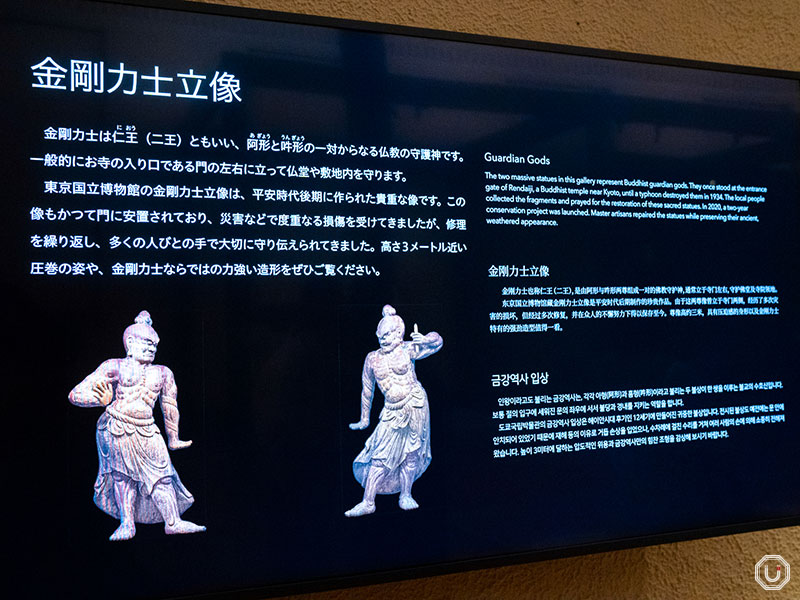
Explanatory displays along the walls provide descriptions in Japanese, English, Chinese, and Korean, helping visitors understand each work in detail.
The Sword Gallery
The Sword room, featuring Japanese swords and armor, is a highlight, especially for international visitors.
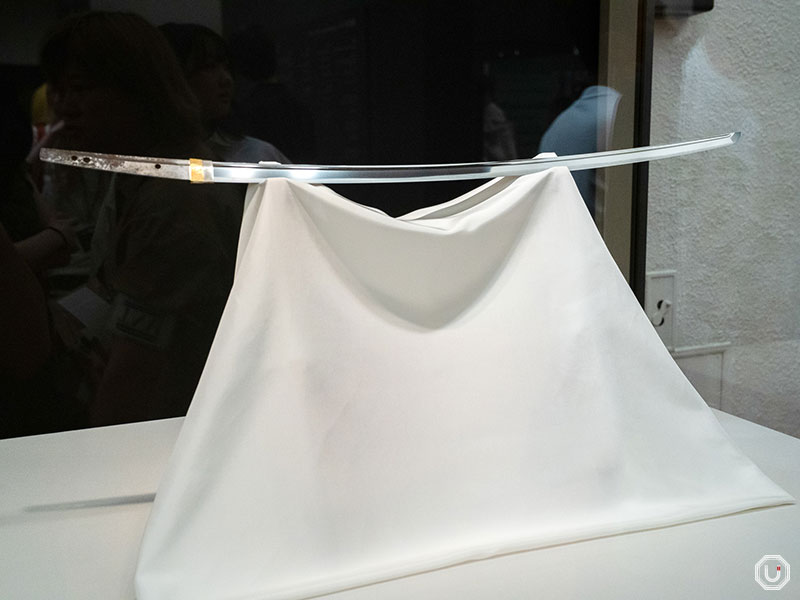
“Important Art Object, Tachi, (Kobizen Tomonari), Heian period, 12th century, Agency for Cultural Affairs collection” (not currently on display)
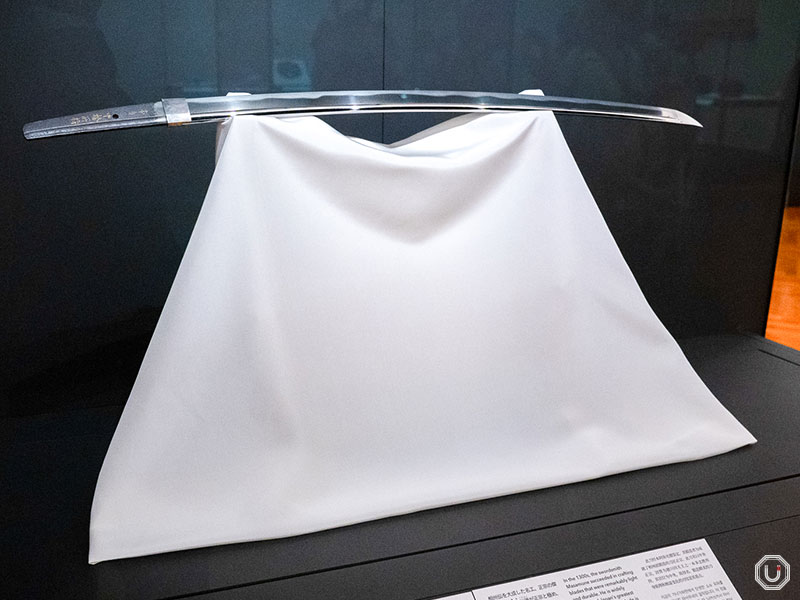
“National Treasure, Katana, Soshu Masamune (Nakatsuke Masamune), Kamakura period, 14th century, Agency for Cultural Affairs collection” (not currently on display)
At first glance, the two swords may appear similar, but they belong to different types—tachi and katana. Observing differences in blade orientation and curvature highlights the uniqueness of Japanese swords.
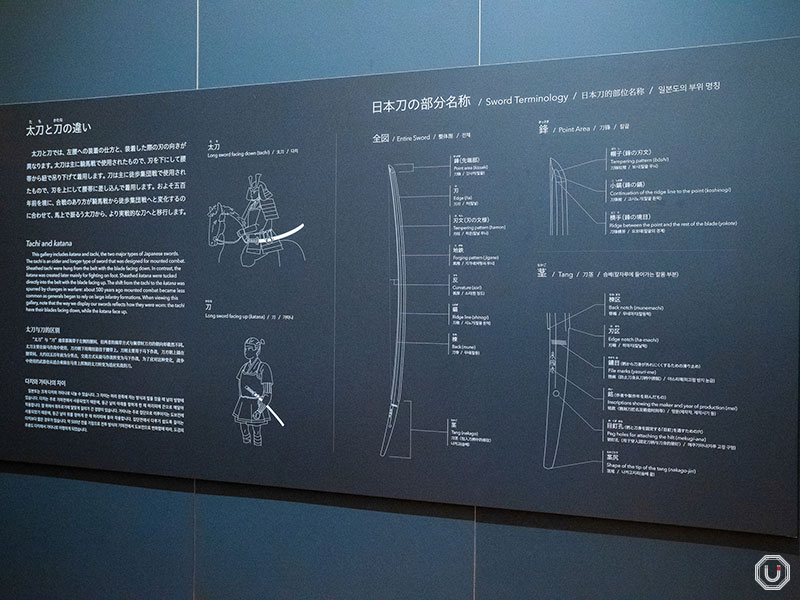
Detailed wall panels explain the names and structures of each part, deepening understanding—a strength of the museum.
Second floor exhibitions exploring different time periods and themes
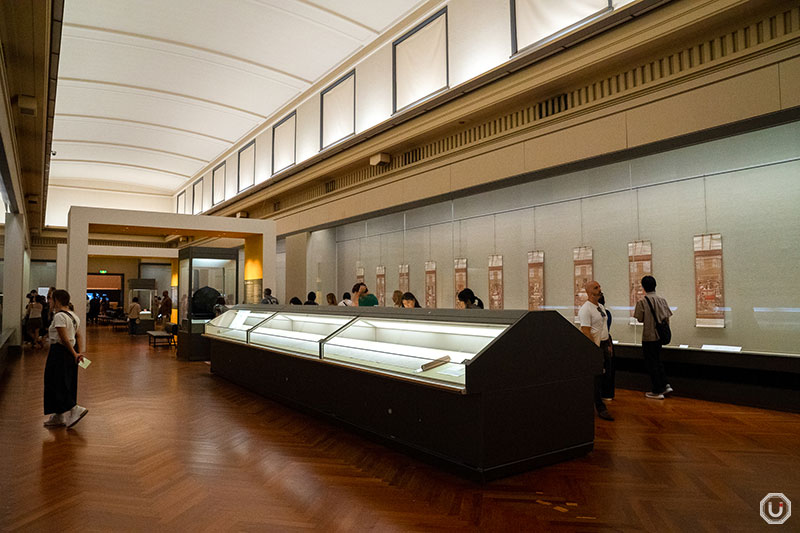
The second floor, organized by era and theme, delves into the spirituality and techniques of Japanese art.
The “Zen and Ink Painting” section displays ink paintings from the Kamakura (1185–1333) to Muromachi periods (1336–1573), embodying quiet depth and philosophical artistry.
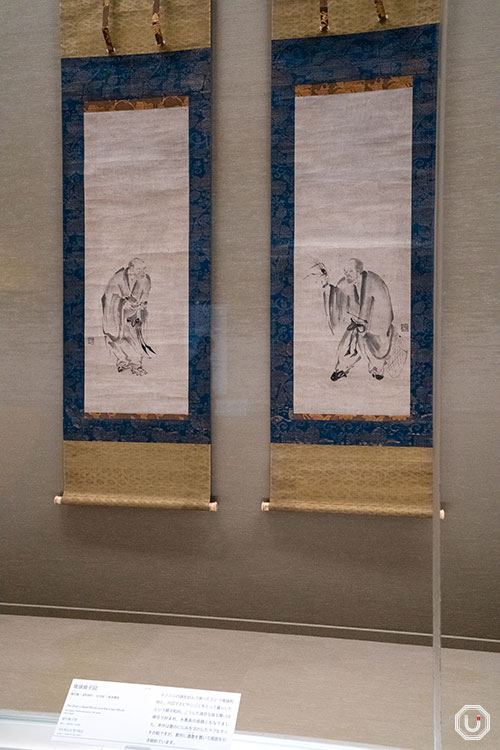
“Inoshishi to Shijimi-zu” (The Boar’s Head Monk and the Clam Monk) by Yōgetsu, Muromachi period, 16th century (currently not on display)
Zen philosophy, widely recognized internationally, is explained alongside its connection to artistic creation.
The “Tea Ceremony” section highlights the world of the Japanese tea ceremony, showcasing tea utensils that combine beauty and function.
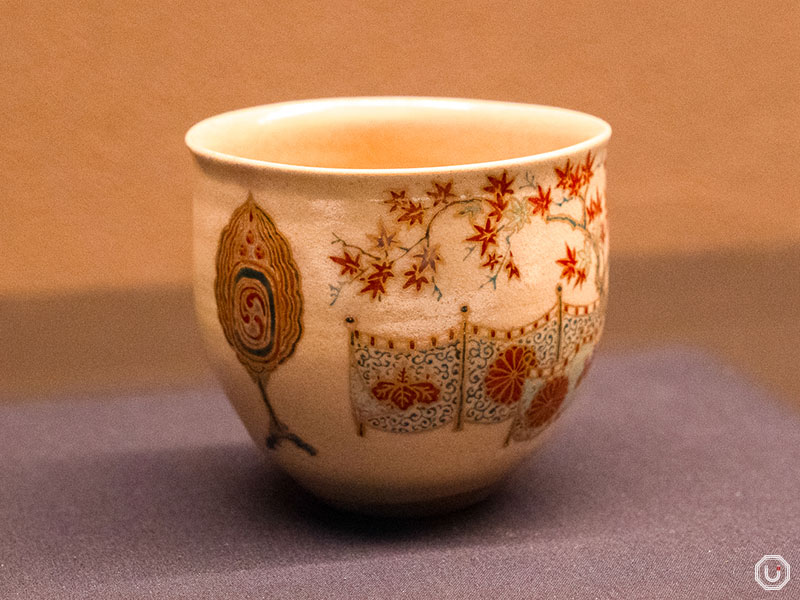
“Tea Bowl with Motifs from the “Autumn Excursion” Chapter of [The Tale of Genji] , Studio of Ninsei gift of Ms. Yamamoto Tomiko and Mr. Yamamoto Kenji (on display until November 9, 2025)
This tea bowl, a 17th-century piece inspired by the “Momiji-ga-no-Maki” chapter of The Tale of Genji, exemplifies this. The evolution of ceramic culture, influenced by Korea and China and adopted in Zen temples and samurai households, is a key highlight.
Samurai attire and traditional performing arts
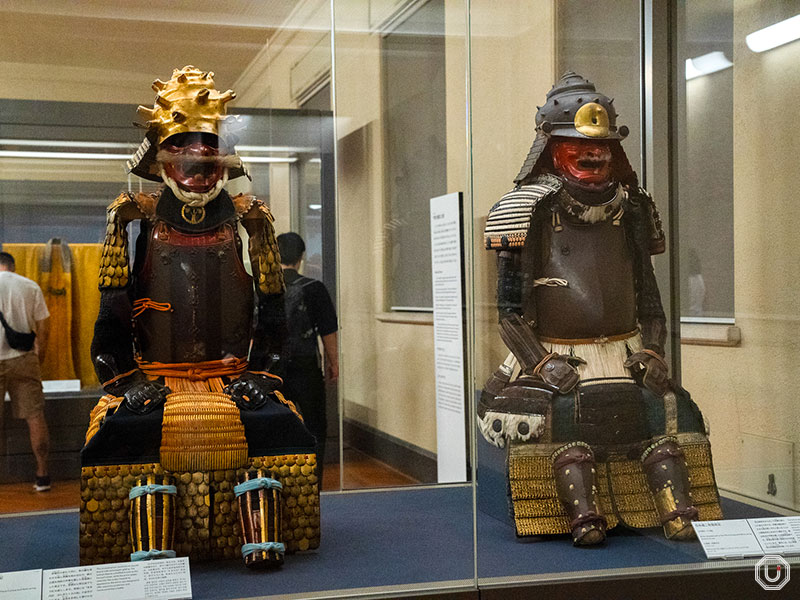
The “Arms and Armor of the Samurai” exhibit features armor, decorated sword scabbards, and clothing worn by samurai.
Adjacent, the “Performing arts” room features Noh theater costumes and props, radiating quiet elegance emblematic of Japanese traditional arts.
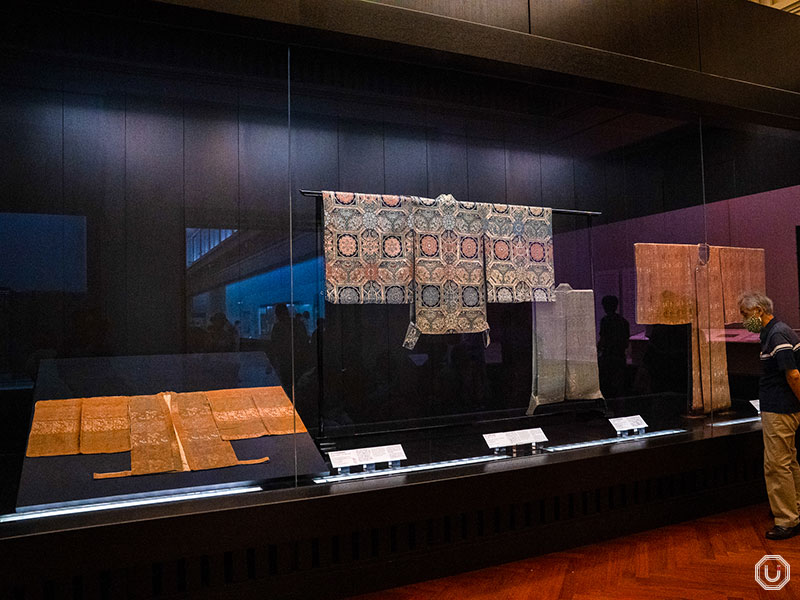
Videos introduce Noh, Kabuki, and Gagaku (a traditional type of Japanese classical music), highlighting their distinct characteristics in an engaging, concise format.
Interactive exhibition spaces
The “Japanese Culture Plaza” on the first floor allows visitors to experience Japanese culture through interactive displays.
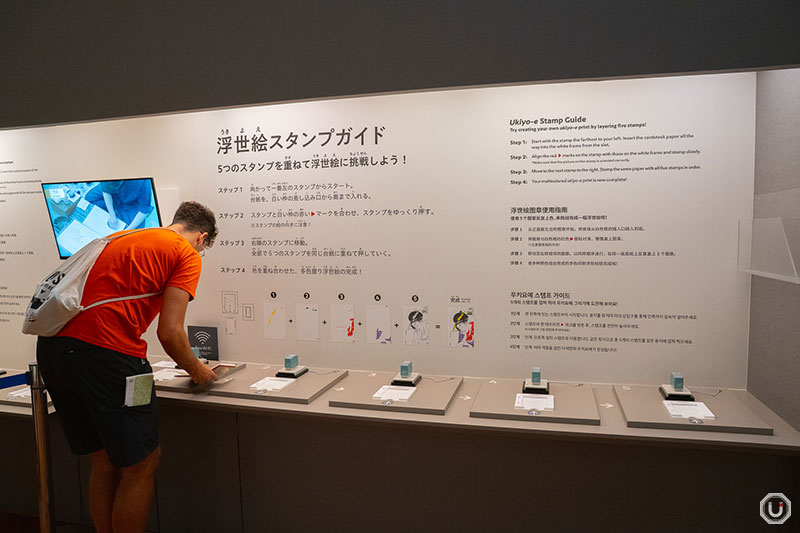
The Japanese Culture Plaza (Experience gallery)
The Japanese Culture Plaza (Experience gallery) is a space where people of all ages can gather and experience the charm of Japanese culture while having fun.
The Ukiyo-e Stamp exhibit offers a unique hands-on experience, letting visitors explore the traditional multi-color printing technique of ukiyo-e (traditional Japanese woodblock prints) through stamps.
By inserting a sheet into the frame and stamping step by step, the ukiyo-e print gradually comes to life.
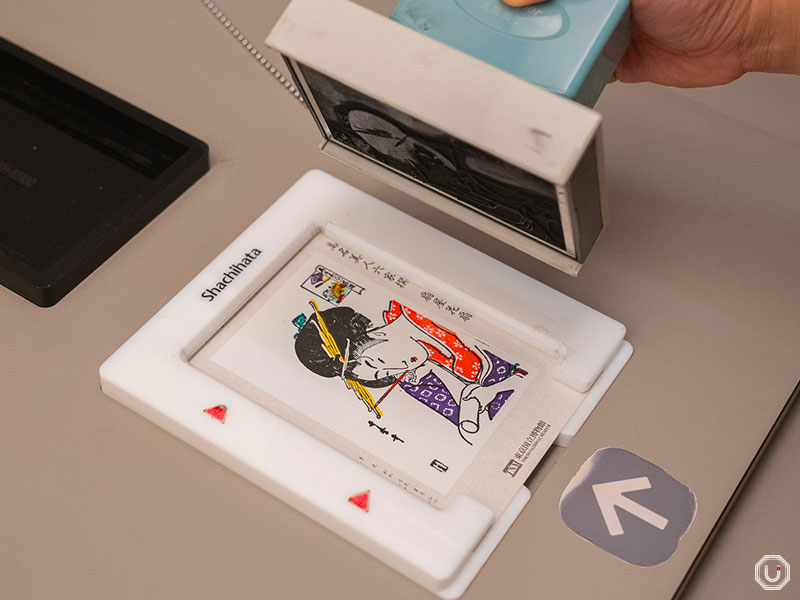
Interactive ukiyo-e creation exhibit
Completed prints become postcards, perfect as souvenirs or for mailing from Japan.
A display allows close-up views of samurai armor, with a section to lift replicas and feel their weight.
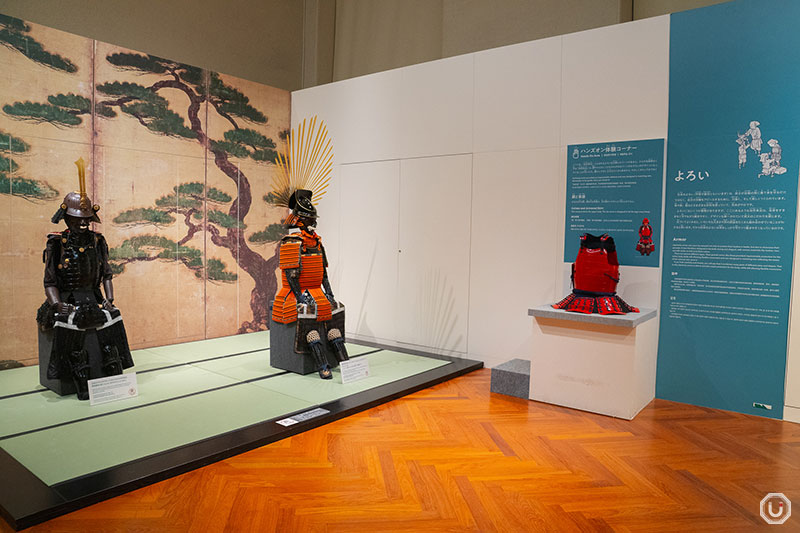
Space for viewing samurai armor up close
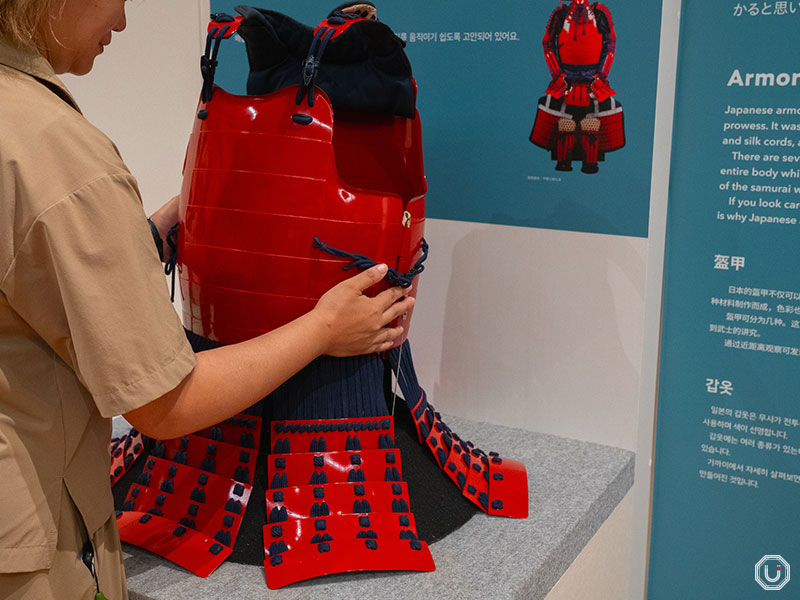
Corner to experience the weight of samurai armor
In The Door to Japanese Art (Interactive gallery) , a “Digital Timeline of Japanese Art” spans an entire wall.
The timeline traces the flow of Japanese art from the Jomon period, about 12,000 years ago, and is displayed on a large 14-meter-wide (roughly 45 feet) screen, accompanied by video presentations.
After the opening video, 16 representative works appear. Standing at designated “Exciting Points” triggers pop-up images of each artwork.
Visitors can interact with the works by zooming, rotating, and exploring them in other interactive ways.
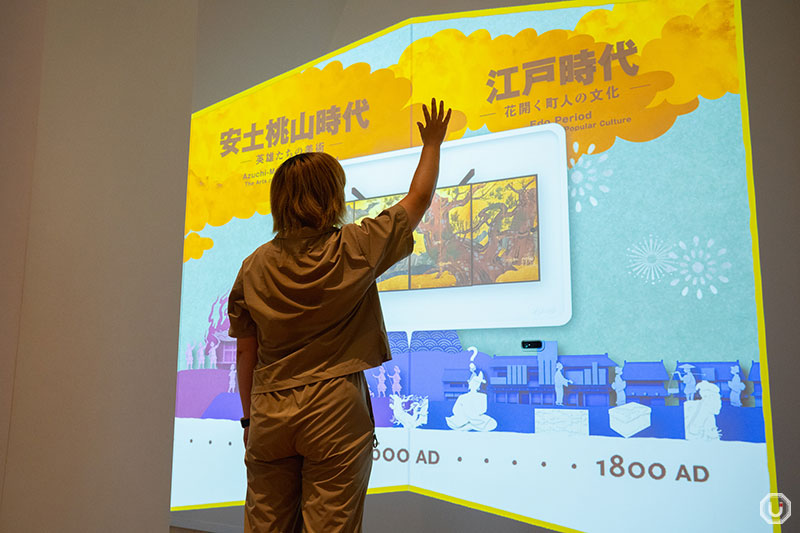
In addition to its permanent exhibitions, a variety of special exhibitions are held throughout the year, making the Tokyo National Museum truly packed with highlights.
It’s a recommended spot for everyone—from those who want to study a specific genre in depth to those who simply want to learn the basics of Japanese art.
*All works without a listed collection are part of the Tokyo National Museum’s own collection.
Information
| Facility name | 東京国立博物館 Tokyo National Museum |
|---|---|
| Address | 13-9 Ueno Park, Taito Ward, Tokyo
|
| Access |
Ueno Station(UEN) 6-minute walk from Ueno Station Park Gate
|
| Phone number | 050-5541-8600(”Hello Dial” general information) |
| Hours | Mon-Thur. & Sun. 9:30-17:00(last admission is 30 minutes before closing) Fri-Sat. 9:30-20:00(last admission is 30 minutes before closing) special and planned exhibitions require a separate admission fee |
| Closed | Monday(open if Monday is a nat’l holiday; closed the following weekday)New Year’s holidays |
| Admission | General Admission 1,200 JPY University students 500 JPY Free admission for high school students and younger, visitors under 18, and visitors 70 and over special and planned exhibitions require a separate admission fee |
| Official website | https://www.tnm.jp/ |
| Pamphlets | Available with Japanese, English, Chinese (simplified and traditional), Korean, Spanish, German, and French language |
| Exhibit audio guides | Available with Japanese, English, Chinese, and Korean language |
※All museum information in this article is accurate as of September 2025.
